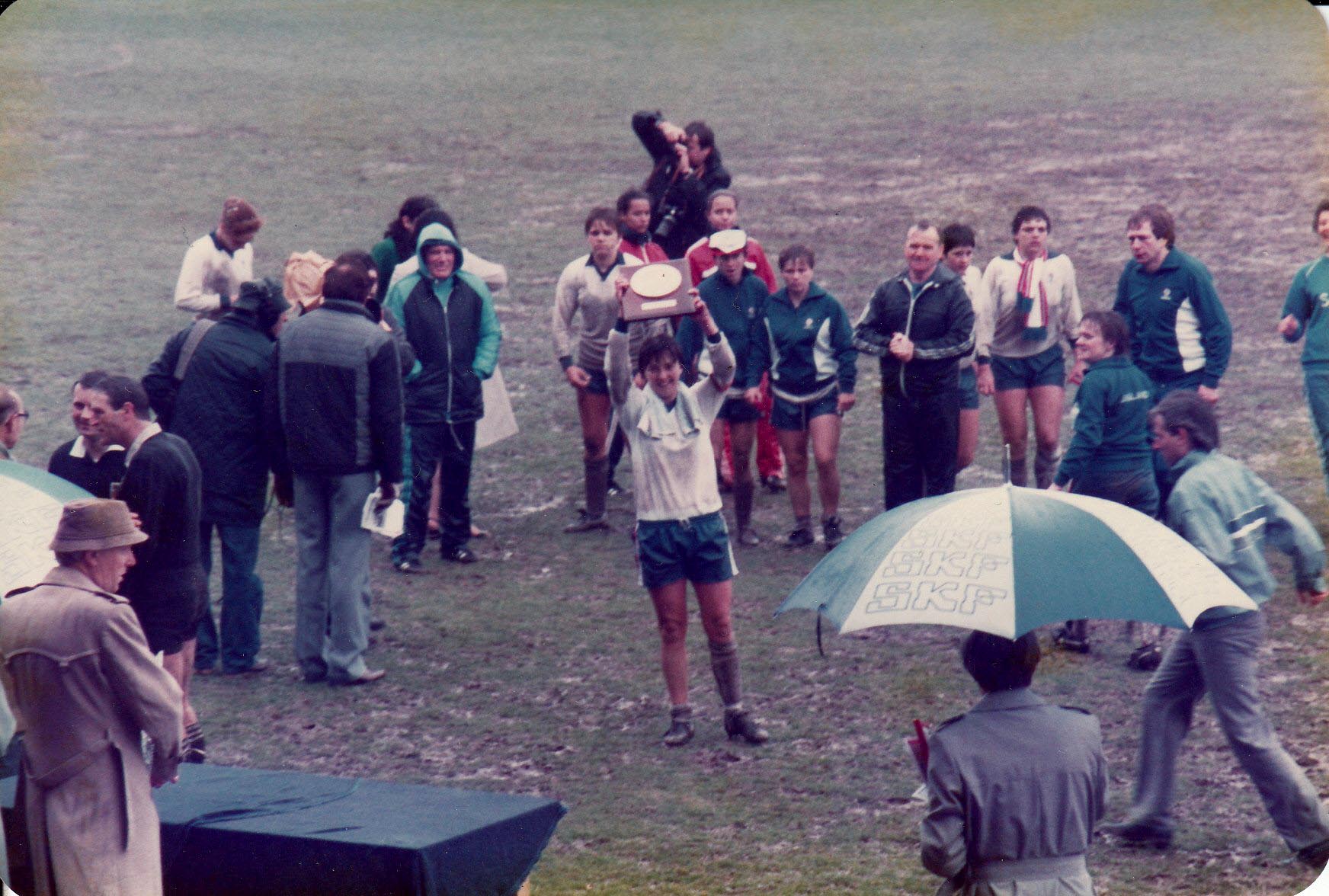Object of the Week: Carol Thomas’ 1984 Women’s Euro medal Calendar
21 Jul 2022
By Kate Wells, MA Public History student at Royal Holloway, University of London.

Who is Carol Thomas?
Carol Thomas was called up to the England national team in 1974 at the age of nineteen. A reliable right-back, she became the side’s second ever captain in 1981, and first captain of an England team outside of Europe, leading them to Japan for the Mundialito.
During her England career, Thomas wore the armband at seven consecutive tournaments, playing all 29 games, winning 20 and only losing five – two of which were penalty shootouts! She captained England to two tournament victories: the 1976 Pony Home Championship and the 1985 Mundialito.
One of her most significant achievements was serving as an integral member of the squad that came runners-up in the 1984 UEFA Women’s Championship.
With 56 international caps, and nine years of captaincy, Thomas retired from her international career in 1985. However, remaining a keen player, she would continue playing grassroots football until the age of 54.

Where did the finals take place?
The UEFA Women’s European Championships took place from 1982 to 1984, boasting a two-year competition that would culminate in a 2 legged final. The matches were played over 70 minutes with a size 4 ball.
England were placed in Group 2 alongside Scotland, the Republic of Ireland and Northern Ireland. To ensure consistent fixtures, each team were to play each other twice and those who came top of the group would advance straight into the semi-finals.
Going undefeated, England founds themselves against Denmark in the semi-finals, winning 3-1 on aggregate. They went on to face the dominant Swedish side in the final.
The first leg of the final was played on a warm Saturday afternoon on the 12th of May 1984 at the Ullevi Stadium, Gothenburg. A crowd of 5,552, mostly Swedish fans, watched Pia Sundehage put Sweden in front with a narrow 1-0 win. The scoreline would have been wider were it not for Thomas, keeping her side in it with a remarkable goal-line clearance.

The programme for the second leg.
Two weeks later, the teams were face-to-face once again, but this time at Kenilworth Road, Luton. The pitch, or as many reports highlight, the bog, provided challenging playing conditions for both sides. A wonder goal from Linda Curl secured England a 1-0 victory, ending full-time on a 1-1 aggregate score.
England were unable to silence the Swedish giants when it came to the penalty shootout and the Scandinavian side lifted the winner’s trophy in front of the 2565-person crowd.

Carol lifting the runner-up trophy at Kenilworth Road.
Why was the 1984 Women’s Euro Championship significant for the growth of women’s football?
The build-up to the 1984 UEFA Women’s European Championships can be traced back to 1970. A report from UEFA General Secretary, Hans Bangerter, to the UEFA Executive Committee looked to target the investigation of women’s football in their member countries.
The investigation reported that women were playing football in 22 European countries, yet only eight of these countries’ national footballing organisations had control over them. Subsequently, the Executive Committee considered it essential to bring the sport under control of the national associations.
Drafting guidelines on the game’s structures and standardisation, the newly established women’s football committee revealed its support for introducing an international competition managed by UEFA. Others thought it too premature to launch a competition on such a scale and consequently, development in the women’s game lost momentum and the committee was dissolved in 1978.
Following a period of reflection, a UEFA women’s conference was convened in Zurich in 1980. The following year, the committee agreed that UEFA would start a competition for national representative women teams. At least 12 national associations had to enter a team for its success.
After entries were invited in December 1981, 16 national associations responded. The committee drew up four groups of four teams for the inaugural women’s European Championships to kick off in the summer of 1982.
For the duration of the tournament, UEFA sought out more precise information on the status of women’s football in different European countries. The questionnaire revealed that the sport was developing in most of the member associations.
The future of large international tournaments in women’s football was given the green light by UEFA.

